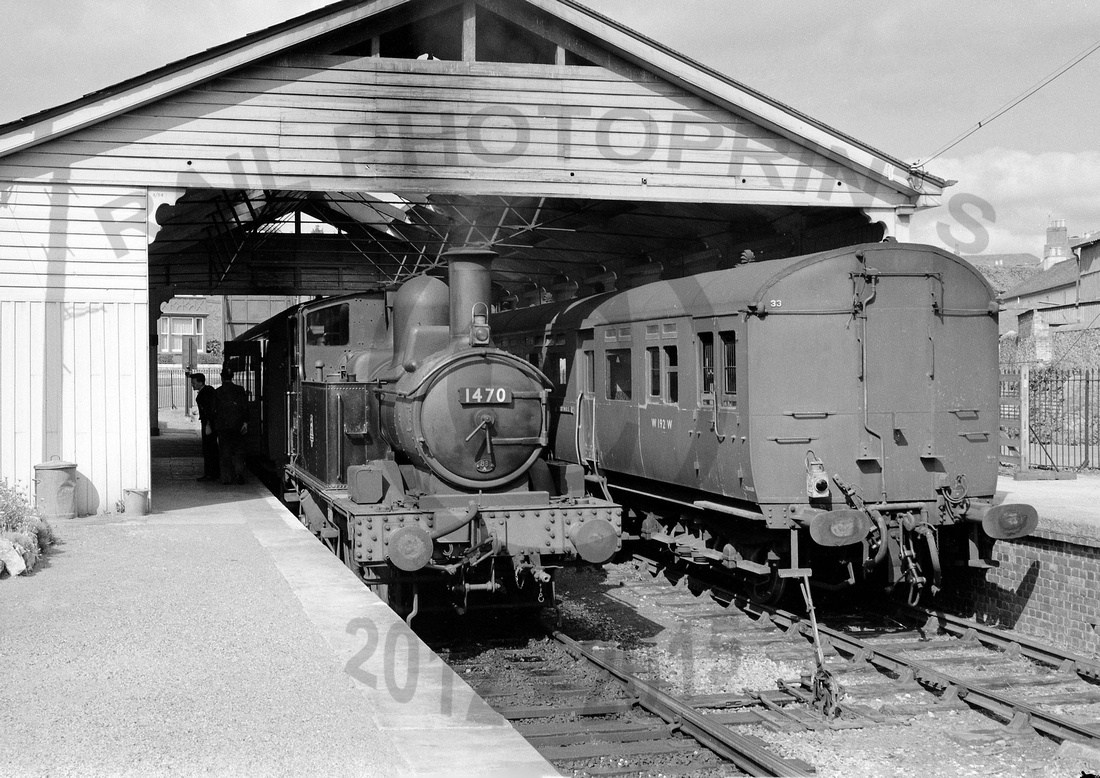Stumpytrain
Active Member
As seasoned "armchair" 2mm Finescale modeller, I'm quite surprised at the change of direction I've taken over the past couple of months. My ambitious dreams of Bristol Temple Meads East, Newton Abbot West or the Royal Albert Bridge weren't making any progress; partly because of the huge fleet of rolling stock required to operate them! For reasons that I may go into in an eventual layout thread, I've somehow migrated to ScaleSeven and I'm still being faithful to the original layout concept. What appeals to me the most about this plan is that, to start with at least, only one locomotive is required to faithfully represent the prototype. Others can come later, as and when...

http://railphotoprints.zenfolio.com/p608550011/h2F6B893E#h2f6b893e
So, a model of ex GWR 1470 is desired. Logically my first, and so far only, purchase has been for some Severn Mill Nameplates numbers and 83A shed plate which appear to get excellent reviews! Tomorrow I'm hoping to make contact with Dave Sharp of MOK to order the 1400 kit. I believe the required bits are...
Alex

http://railphotoprints.zenfolio.com/p608550011/h2F6B893E#h2f6b893e
So, a model of ex GWR 1470 is desired. Logically my first, and so far only, purchase has been for some Severn Mill Nameplates numbers and 83A shed plate which appear to get excellent reviews! Tomorrow I'm hoping to make contact with Dave Sharp of MOK to order the 1400 kit. I believe the required bits are...
- MOK 1400 Kit
- Slaters 7862GW 5'2" 16 Spoke Driving Wheels x 2 (Turned to S7)
- Slaters 7843 3'7" 10 Spoke Bogie/Tender Wheel (General Pattern) (Turned to S7)
- ABC Gears Mini 7S Gear Box (Possibly 30.2:1 Ratio?)
- Maxon 2022413 Single Ended 22mm Diameter Motor (or maybe the Canon 1833)
- Axleboxes
- Suspension - I like the idea of the CLAG Continuous Springy Beam but I'm concerned about the complications of the 0-4-2 wheelbase.
- Pickups - The 2mm Finescale modeller in me is leaning towards split axles, but with the axle boxes insulated from the frames. Is that feasible? I don't like the idea of wire or plunger pickups but they may be more practical.
- Axleboxes - With the suspension and pickups in mind what axleboxes can be modified to suit my needs?
- Roller bearings - do these make a difference in 7mm?
- DCC Sound - She's definitely going to be DCC fitted, what I'm unsure about is if it's worth going for sound. Has anyone experienced the Howes 1400 sound chip? Speakers etc. seem to be a bit of a minefield but I must admit this hasn't been given much of my attention so far.
Alex


 )
)





